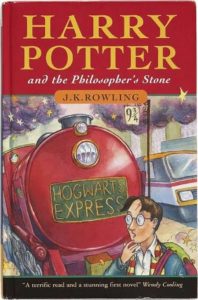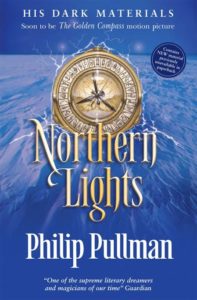 Here are three best-selling fantasy series: Harry Potter (of which I have read all several times over), Philip Pullman’s His Dark Materials (of which I have read all, including the latest: The Secret Commonwealth) and Jessica Townsend’s Nevermoor series, of which I have read the first title, The Trials of Morrigan Crow – there are two more: Wundersmith and a third instalment due out in 2020, Hollowpox.
Here are three best-selling fantasy series: Harry Potter (of which I have read all several times over), Philip Pullman’s His Dark Materials (of which I have read all, including the latest: The Secret Commonwealth) and Jessica Townsend’s Nevermoor series, of which I have read the first title, The Trials of Morrigan Crow – there are two more: Wundersmith and a third instalment due out in 2020, Hollowpox.
When I was reading Nevermoor, I wondered why it didn’t grab me as much as the other two series (which I count as among my favourite books). I did enjoy Nevermoor but I did not rate it as highly as many other fantasy book aimed at the child and YA market. I was more engaged by Christelle Dabos’s Mirror Visitor books, whose strange, exaggerated imagined worl d, loosely based on a Victorian era mis-en-scene, has something in common with Townsend’s own Nevermoor. Dabos’s books are perhaps aimed more at an older readership, and this lends a certain dark malice to the wacky characters, and her heroine, Ophelia, being older than Morrigan, has more agency. I often found myself being put off by some of the devices in Nevermoor, that seemed like something out of a child’s picture book: the brolly rail which characters can catch by hanging on to their umbrellas, the ever-changing bedroom, the ‘umble, chimney sweeper-like boy who befriends Morrigan. There is an Alice in Wonderland feel to it all – I could never see the appeal in that tale.
d, loosely based on a Victorian era mis-en-scene, has something in common with Townsend’s own Nevermoor. Dabos’s books are perhaps aimed more at an older readership, and this lends a certain dark malice to the wacky characters, and her heroine, Ophelia, being older than Morrigan, has more agency. I often found myself being put off by some of the devices in Nevermoor, that seemed like something out of a child’s picture book: the brolly rail which characters can catch by hanging on to their umbrellas, the ever-changing bedroom, the ‘umble, chimney sweeper-like boy who befriends Morrigan. There is an Alice in Wonderland feel to it all – I could never see the appeal in that tale.
 So, Nevermoor is aimed at a younger readership but so were the first Harry Potter books (Harry was 11, the same age as Morrigan) and Pullman’s The Northern Lights. What these latter books have is a level of seriousness, and a level of realness. Okay, the Dursleys are pretty exaggerated but you do get a sense that Harry is a normal kid coping with the circumstances meted out to him – school and a difficult home life. I also thought that Lyra’s real life was established at Jordan College where there was a lot of ‘normal life’ going on, like responsibilities, and an adult life of complications just beyond Lyra’s understanding.
So, Nevermoor is aimed at a younger readership but so were the first Harry Potter books (Harry was 11, the same age as Morrigan) and Pullman’s The Northern Lights. What these latter books have is a level of seriousness, and a level of realness. Okay, the Dursleys are pretty exaggerated but you do get a sense that Harry is a normal kid coping with the circumstances meted out to him – school and a difficult home life. I also thought that Lyra’s real life was established at Jordan College where there was a lot of ‘normal life’ going on, like responsibilities, and an adult life of complications just beyond Lyra’s understanding.
With Morrigan, there is no ‘normal’ life, as such, established. She is in a strange, alternative world and she is a strange, alternative person – a cursed child, blamed for every calamity big or small in the region and, who, it is preordained, will die on her eleventh birthday.
I suppose I am saying that I like a real-life anchor to this sort of fantasy to leaven the whimsy and flummery of fantasy worlds such as Nevermoor.
I haven’t read the second instalment, Wundersmith, so perhaps Morrigan grows up and learns to face horrors and find a way through them herself. Certainly, at the end of Nevermoor, this is suggested.

